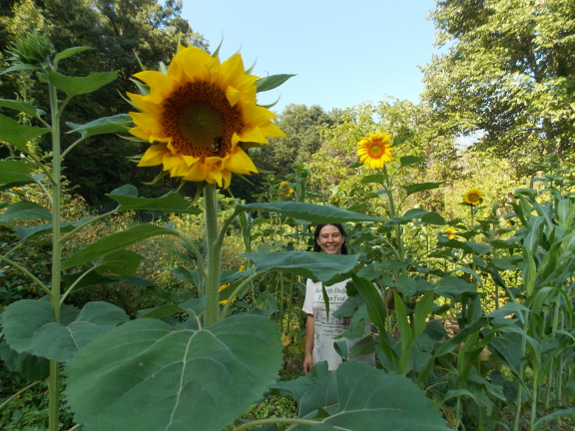
Carbon sinks on the homestead

While we refer to our
"lawn" only in parentheses since the grass is full of dandelions,
clover, and whatnot and never gets fertilized (except with the chicken tractor), I do occasionally feel guilty about the grassy areas. Granted, on our farm, grassy garden aisles make sense,
but most like-minded people think all lawns are evil. However, as
I mowed Thursday, I started wondering whether the carbon dioxide coming
from our mower might not be offset by the carbon being sequestered in
the soil as grass blades and roots turn into humus.
Sure enough, independent
scientists (in addition to the lawn-care "scientists" you might expect
to feel this way) report that lawns do act
as carbon sinks. A minimal input lawn like ours that only gets
mowed with no other treatment sequesters about 147 pounds of carbon per
lawn per year (after you subtract out the carbon released by the
mower). The abstract I read didn't mention lawn size, but I'm
assuming they're using the American average of a fifth of an acre, which
matches up with another study that reports each acre of lawn sequesters
a net of 760 pounds of carbon per year.
Of course, cover crops
will put the puny carbon sequestration powers of a lawn to shame.
Sorghum-sudangrass will pump a massive 10,565 pounds of carbon per acre
into the soil, and oilseed radishes don't do so bad either at 3,200
pounds of carbon per acre. In fact, a 120-year-old northeastern
woodland only clocks in around the carbon sequestration powers of
oilseed radishes, and you can still grow tomatoes in the oilseed-radish
ground during the summer.
Which is all a very long
way of saying --- if you're considering making a patio or leaving that
area as lawn, go for the lawn. But if you really want to sequester
carbon fast, plant some cover crops.
Want more in-depth information? Browse through our books.
Or explore more posts by date or by subject.
About us: Anna Hess and Mark Hamilton spent over a decade living self-sufficiently in the mountains of Virginia before moving north to start over from scratch in the foothills of Ohio. They've experimented with permaculture, no-till gardening, trailersteading, home-based microbusinesses and much more, writing about their adventures in both blogs and books.
Want to be notified when new comments are posted on this page? Click on the RSS button after you add a comment to subscribe to the comment feed, or simply check the box beside "email replies to me" while writing your comment.
- Remove comment
- Remove comment
- Remove comment
- Remove comment
- Remove comment
